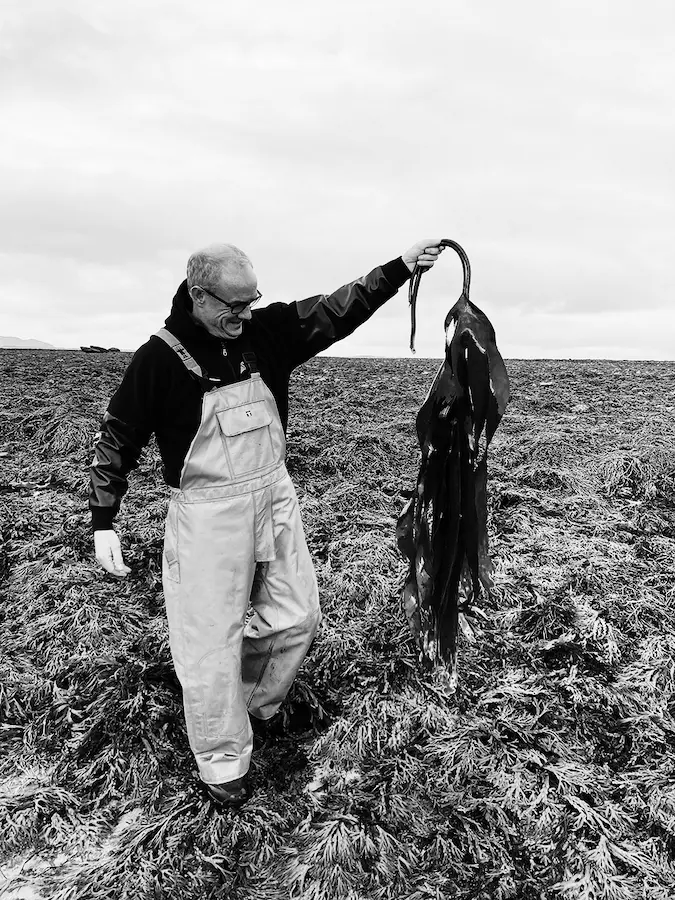OUR SOURCE
NutraMara’s marine molecules are isolated from a variety of indigenous Irish, organic seaweed species that are sustainably cultivated and harvested by hand on the west coast.
- Fucus vesiculosus
- Ascophyllum nodosum
- Laminaria digitata
Once harvested they are pre-processed in-land in an organically certified facility, followed by bioactive ingredient extraction in Ireland’s leading food R&D centre, with full (short) supply chain control and traceability.
These isolated bioactives have evolved over millennia to have a range of functions which ensure the survival of the algae in the harsh ocean environment in which they thrive. Synthesis of these molecules is not currently feasible and can only be accessed via isolation from algae.
Harvesting

WHY SEAWEED?
Seaweed is a fully renewable natural resource in Ireland, with a wide variety of wild organic seaweed species growing in abundance along the Irish Wild Atlantic Way. The seaweeds utilised to create NutraMara’s high-purity ingredients and extracts are certified organic and are sustainably harvested by hand to ensure regeneration, and that the delicate seabed goes undisturbed.
Algae do not compete or displace land use for food production and hold huge potential to contribute to food and nutritional security. The ocean is the world’s largest carbon sink, with carbon sequestration, powered predominantly by algae, filtering nutrients such an N, P & K from the water, reducing acidification and significantly contributing to the mitigation of Climate Change.
- Non-compete with land
- Food & Nutritional security
- Bio-based alternatives for food, fuel & fertilisers
- Biodiversity protection
- Carbon sequestration (sea & soil)
- Reduction in Green House Gas emissions
- Ocean health
